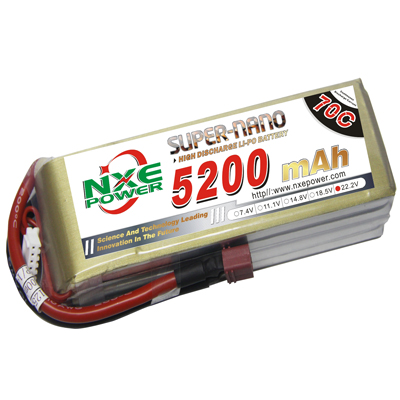Difficult to solve battery technology problems, crazy expansion of power battery production in China
TIME:2015-08-11 16:16:07

According to incomplete statistics by reporters, a total of 13 listed
companies invested 43.5 billion yuan in power batteries from January to July
this year. Among them, BYD's 15 billion yuan expansion project for lithium
batteries and the research and development of pure electric vehicles are the
largest, followed closely by Wulong Electric's 9.3 billion yuan investment in
power battery projects. Jian Liang, an analyst at CCID Consulting Automotive Industry Research
Center, stated in an interview with reporters that it is expected that the
investment in power batteries will exceed 100 billion yuan in 2015; However, due
to the need for a certain period of time for new production capacity, short-term
production capacity is still insufficient. In the future, with the increase of
power battery production capacity, it is predicted that domestic lithium power
batteries may reach supply-demand balance by 2017. Production capacity in short supply Xiao Han, a researcher in the new energy industry at China Investment
Consulting, said that the investment boom in power batteries to some extent
reflects the high enthusiasm of consumers for purchasing new energy vehicles,
and the market is in short supply. As of July this year, the cumulative production of new energy vehicles has
reached 98900 units, a three fold increase compared to the same period last
year. The demand for power batteries has exceeded 6500MWh, which is 54.76%
higher than the annual production of power batteries in 2014, which was about
4200MWh. "The production capacity growth rate of power batteries cannot keep up with
the production growth rate of new energy vehicles," Jian Liang told reporters.
According to the production capacity design and production line construction of
domestic electric vehicle enterprises in 2014, there is currently insufficient
production capacity of power batteries, resulting in a supply shortage. According to data provided by Forward Industry Research Institute, it is
expected that the sales of electric vehicles in China will reach 220000 units in
2015, a year-on-year increase of 162%. The demand for power lithium batteries is
about 12500MWh, with a production value of approximately 25 billion yuan. "With the increasing promotion of new energy vehicles this year, power
batteries will enter a stage of tight supply, and there will be huge demand in
the future. There will be no risk of overcapacity in the short term," Xiao Han
pointed out. It is worth noting that among the 13 listed companies counted by the
reporter, there are also non power battery enterprises, such as Dongyuan
Electric, which mainly deals with transmission and distribution electrical
products, steel structure products, etc. In April of this year, Dongyuan
Electric Appliances acquired 100% equity of Guoxuan High tech from 9 enterprises
and 43 natural persons for 3.35 billion yuan. The company paid 490 million
shares to the counterparty as transaction consideration through the issuance of
shares. Guoxuan High tech's products mainly include lithium-ion power battery
packs, battery cells, and lithium iron phosphate cathode materials, among which
battery packs account for more than 98%, second only to BYD and Tianjin Lishen
based on 2014 sales. In addition, many automotive component companies have entered the field of
power batteries, such as Dawn Corporation, which specializes in automobiles and
components. In June of this year, Shuguang Co., Ltd. raised 617 million yuan to
acquire and increase its capital in Yineng Electronics, entering the new energy
vehicle power battery market. Jian Liang analyzed to reporters that the current increase in production
capacity comes from the expansion of existing power battery enterprises (such as
Lishen, Guoxuan, BYD, etc.), the transformation of small battery enterprises and
traditional lead-acid enterprises (such as Camel and Tianneng) towards power
batteries, and the extension of some vehicle enterprises (such as Lifan and
BAIC) towards upstream batteries. According to data from the Ministry of Industry and Information Technology,
in the first half of this year, battery manufacturing enterprises above
designated size in China completed a cumulative increase of 0.4% in their main
business revenue year-on-year, achieving a total profit increase of 27.3%
year-on-year. Among them, lithium-ion battery manufacturing enterprises
completed a cumulative increase of 17.4% in their main business revenue
year-on-year, achieving a total profit increase of 72.8% year-on-year. As of now, multiple listed power battery companies have disclosed their mid
year performance, among which Shanshan Group's net profit in the first half of
the year was 611 million yuan, a year-on-year increase of 413.79%; Dongyuan
Electric Appliances achieved a total operating revenue of 890 million yuan in
the first half of the year, a year-on-year increase of 152.99%; Realized a net
profit of 219 million yuan, a year-on-year increase of 214.16%. Difficult to solve battery technology challenges Although the growth rate of new energy vehicles is accelerating, a survey
shows that about 70% of consumers believe that the current level of battery
technology is the main obstacle to purchasing new energy vehicles. In fact, the
lifespan, endurance, battery safety, and charging efficiency of new energy
vehicles have always been the four major concerns for consumers when purchasing
cars. Xiao Han pointed out that battery technology is the most core technology
for car companies to develop new energy vehicles, and the influx of capital can
promote the progress of battery technology in China; But if companies only focus
on short-term returns on investment and do not pay attention to technological
breakthroughs, these problems will still be difficult to solve, and the uneven
quality of batteries in the industry will still exist. Focusing on core
technology research and development, manufacturing high-quality power battery
products is the key to solving problems. Journalists have found that in the first half of this year, major
enterprises have increased their investment in the field of power batteries to
accelerate their entry into the new energy vehicle market. However, they have
focused more on expanding production capacity and invested less in technology
research and development. Jian Liang believes that compared to leading foreign companies, there is
still a significant gap in domestic power battery technology. In addition,
domestic research and development mainly focuses on process improvement, with
limited forward-looking and fundamental research and development, making it
difficult to develop and manufacture high-quality power battery products.
Therefore, these issues are still difficult to solve in the short term. It is worth noting that power batteries currently account for a relatively
high proportion of the cost of new energy vehicles, generally accounting for
one-quarter to one-third of the cost of new energy vehicles, and some even
accounting for half. A person from a lithium battery company told reporters
that, taking BAIC New Energy EV200 as an example, the cost of batteries accounts
for almost half of the total vehicle cost. However, according to data obtained by journalists in the industry, the
current price of domestically produced lithium-ion batteries is 2-2.5 yuan/Wh,
with low-end batteries costing about 2 yuan/Wh and high-end batteries costing
about 2.5 yuan/Wh. Korean power battery manufacturers such as LG and Samsung
have reduced their costs to below 1.8 yuan/Wh. With the influx of a large amount of capital, the rapid increase in
production capacity of power batteries and market competition may further
intensify, leading to a downward trend in lithium battery prices.
Jianliang analysis shows that the main factors contributing to the decline
in power battery prices are market competition, economies of scale, decline in
equipment and raw materials, and progress in production processes and
technology. The competition in the power battery market intensifies market
differentiation. Small and medium-sized enterprises and new entrants may lower
prices and sacrifice profits in order to seize market share, leading to a
decrease in overall power battery prices. Meanwhile, advantageous enterprises
can achieve economies of scale by expanding production, which will further
reduce battery costs and also lead to a decrease in prices.

![[field:title/] [field:title/]](/uploadfile/202504/80f770e46696ba4.png)
![[field:title/] [field:title/]](/uploadfile/202407/0fbb04c355bb2.jpg)
![[field:title/] [field:title/]](/uploadfile/202312/677ac8d034350a8.jpg)
![[field:title/] [field:title/]](/uploadfile/202312/4fa579d8c53d9a6.jpg)
![[field:title/] [field:title/]](/uploadfile/202312/acb5267c9ee2f5d.jpg)
![[field:title/] [field:title/]](/uploads/181130/1-1Q13016350Ha.jpg)
![[field:title/] [field:title/]](/uploads/181130/1-1Q130162Q4D8.jpg)
![[field:title/] [field:title/]](/uploads/181130/1-1Q1301626292U.jpg)
![[field:title/] [field:title/]](/uploads/allimg/181130/1-1Q1301623580-L.jpg)
![[field:title/] [field:title/]](/uploads/allimg/181130/1-1Q1301554200-L.jpg)
![[field:title/] [field:title/]](/uploads/allimg/181130/1-1Q1301543090-L.jpg)

